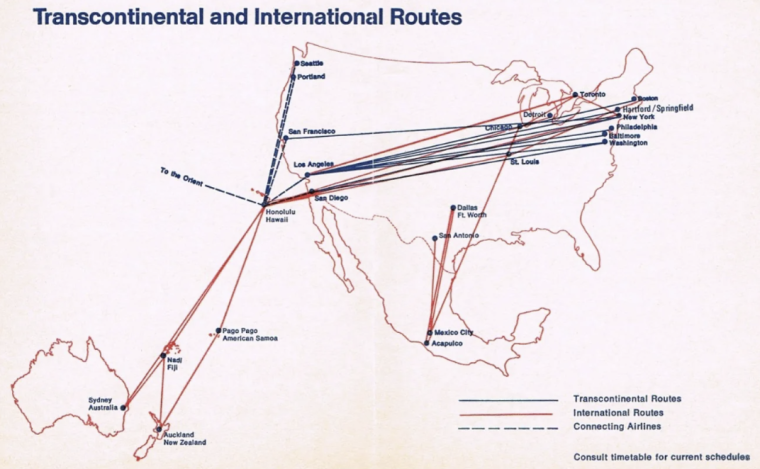American Airlines has been a major player in the global aviation industry since it began its operations in 1936. As of October 2024, American Airlines boasts a net worth of $7.83 billion, making it a major player in the aviation sector.
At Business2Community, we’ve compiled data from various sources to analyze American Airlines’ net worth and its evolving journey. Keep reading to explore the airline’s key milestones, financial performance, challenges, and more.
What is American Airlines Net Worth?
As of October 2024, American Airlines’ net worth, also known as its market cap, is $7.93 billion. Since its merger with US Airways and subsequent IPO in 2013, the company has experienced fluctuations in its value due to economic conditions and industry-specific challenges.
At its IPO, American Airlines stock opened at $23.95, its high of the day was $25.44, its low was $23.45, and its closing was $24.60. Until November 2011, American Airlines had traded as AMR Corp on the NYSE.
The merged company saw substantial growth in its first year, with the closing price one year after its IPO at $50.82, nearly double its opening price.
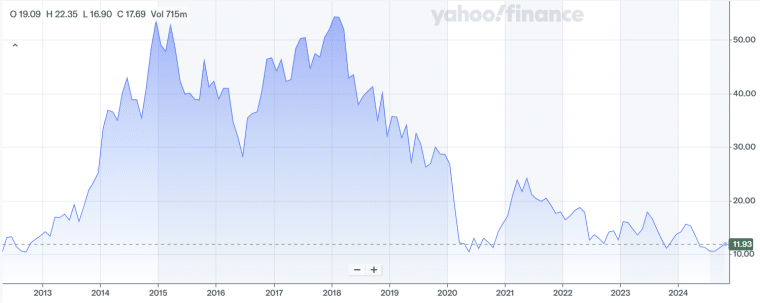
In the 4th quarter of 2013, before American Airlines Group was formed from the merger of US Airways and American Airlines, it had a net loss of $2 billion, including the results for US Airways from December 9 2013 to December 31, 2013.
The original American Airlines (American Air Lines) as it was named in 1934 when it was founded, first made a profit in 1936. This was the year that it became the first airline to fly the Douglas DC-3 in commercial service between New York to Chicago.
The previous year it had a loss of $748 million and between May 12 and December 31, 1934, it had a loss of $1.37 million When it did finally make a profit in 1936 it came in at $4,589.
In 2016, oil price hikes affected airlines globally, causing the American Airlines stock to drop along with a range of other aviation companies. The airline saw a two-thirds drop in profits between 2015 and 2016 owing to the oil price shock and an accounting quirk used to bolster 2015 results.
The company’s peak stock price occurred in 2018, when shares reached $58.47, marking a significant milestone for the airline. However, the COVID-19 pandemic hit American Airlines in the same way as many in the aviation industry, leading to a sharp decline in both its market value and stock price. For example, the stock price was $28.68 at the end of 2019 and had dropped 46% to $15.75 in 2022.
Since then, the company has been on a slow path to recovery. In early October 2024, the stock was priced at $11.53, having reached a 52-week high of $16.15 and a 52-week low of $9.07.
American Airlines typically releases its annual financial results in January of the following year.
American Airlines Revenue
American Airlines has seen significant fluctuations in its revenue over the past decade. The airline reached a milestone in 2014, generating $42.7 billion in annual revenue for the first time. However, the airline faced substantial revenue drops in 2020 due to the COVID-19 pandemic, which affected global travel demand. American Airlines has since made a partial recovery, though its pre-pandemic revenue levels have yet to be fully restored.
Here is a table showing the last 10 years of American Airlines’ full-year revenue:
| Year | Revenue ($ Billion) |
|---|---|
| 2014 | $42.65 |
| 2015 | $40.99 |
| 2016 | $40.14 |
| 2017 | $42.62 |
| 2018 | $44.54 |
| 2019 | $45.77 |
| 2020 | $17.33 |
| 2021 | $29.88 |
| 2022 | $48.97 |
| 2023 | $52.79 |
American Airlines Group Inc. released its fourth-quarter and full-year 2023 financial results in January 2024, reporting its financial performance and key metrics. The company generated an operating cash flow of $3.2 billion for the year, excluding net special items. The free cash flow amounted to $1.5 billion.
In the fourth quarter, American Airlines reports showed a net profit of $822 million, boosted by strong demand and smart equity investments. The company produced plenty of free cash flow and the report noted that present demand trends are expected to support continued recovery.
American’s CEO, Robert Isom, spoke on the financial results conference call that year, addressing the fact that they did not perform as well as expected and that this was due to its prior marketing strategies. He highlighted the company’s stock performance and management’s discussion on adjusted earnings and operating margin.
American Airlines Dividend History
In 2014, American Airlines Group paid its first dividend since 1980 and initiated a stock buyback. It declared a dividend of 10 cents per share for shareholders and also planned a $1 billion share repurchase program.
American Airlines has not paid dividends to its shareholders in recent years. In 2020 it suspended its dividend program, saying that any future dividend would be declared at the discretion of the board and subject to various legal and economic factors. The company has not announced any stock splits but has had many stock buybacks in the past decade.
Although new dividend announcements aren’t expected, here are the dividend details paid out over the last decade:
| Date | Stock Price ($) | Dividend Payout ($) | Yield (%) |
| 11/3/2015 | 44.43 | 0.38 | 0.86 |
| 2/8/2016 | 34.07 | 0.38 | 1.12 |
| 5/2/2016 | 33.09 | 0.38 | 1.16 |
| 8/3/2016 | 32.27 | 0.38 | 1.19 |
| 11/3/2016 | 38.06 | 0.38 | 1.01 |
| 2/9/2017 | 44.84 | 0.39 | 0.86 |
| 5/12/2017 | 44.48 | 0.39 | 0.87 |
| 8/10/2017 | 47.22 | 0.39 | 0.82 |
| 11/10/2017 | 44.66 | 0.39 | 0.87 |
| 2/5/2018 | 48.60 | 0.39 | 0.8 |
| 5/7/2018 | 41.55 | 0.39 | 0.94 |
| 8/6/2018 | 37.7 | 0.39 | 1.04 |
| 11/5/2018 | 35.16 | 0.39 | 1.12 |
| 2/5/2019 | 36.45 | 0.39 | 1.08 |
| 5/7/2019 | 33.56 | 0.39 | 1.17 |
| 8/6/2019 | 28.17 | 0.40 | 1.40 |
| 11/5/2019 | 31.07 | 0.40 | 1.28 |
| 2/4/2020 | 28.43 | 0.40 | 1.4 |
Who Owns American Airlines?
American Airlines is owned by American Airlines Group, with the top shareholders being Vanguard Group (11.28%), Primecap Management (8.66%), and BlackRock (6.17%). American Airlines Group was formed in December 2013 after the merger of AMR Corporation (American Airlines) and US Airways Group Inc. (US Airways).
It has its headquarters in Fort Worth, Texas, and is the world’s largest airline in terms of fleet size, passengers carried, and revenue.
Who is the American Airlines CEO?
Robert Isom is the Chief Executive Officer of American Airlines and American Airlines Group, its parent company. He’s also a member of the board of directors. He took his position as the head of the company in March 2022 and was the president before that from 2016 to 2022.
Here are the previous CEOs of American Airlines:
| Tenure | CEO |
|---|---|
| 1934-1968 | C.R. Smith |
| 1968-1973 | George A. Spater |
| 1973-1974 | C.R. Smith |
| 1974-1985 | Albert V. Casey |
| 1958-1998 | Robert Crandall |
| 1998-2003 | Donald J. Carty |
| 2003-2011 | Gerard Arpey |
| 2011-2013 | Thomas W. Horton |
| 2013-2022 | Doug Parker |
| 2022-present | Robert Isom |
The most notable executive challenge for Isom since he became CEO was when he fired the veteran executive Vasu Raja, after learning that his marketing strategy was alienating corporate clients.
The new system put in place by the chief communications officer (CCO) was called modern retailing and tried to get customers to book directly through American Airlines, instead of third-party booking agencies. This angered corporate clients and travel agencies, along with complaints that the technology was under-developed.
Isom acknowledged that the company had moved too quickly to employ this form of modern retailing and that it wasn’t well executed, opining that the departure of Raja was critical for American Airlines to right its path.
American Airlines’ Company History
American Airlines was founded in 1930 by the joining of 80 small airlines and it was initially called American Airways. Since then, it has grown into the largest aviation company in the world in terms of customers and staff. American Airlines headquarters are in Forth Worth, Texas. It operates a vast network of domestic and international routes, flying to and from more than 360 destinations across 50 countries and six continents.
The company’s journey includes milestones like a merger with US Airways in 2013, which solidified its position as the world’s largest airline.
Here’s a look at the key moments in American Airlines Group Inc. history:
1920-1930s: Beginnings and Early Growth
American Airlines began with Charles A. Lindbergh, when the chief pilot of Robertson Aircraft Corporation flew from St. Louis to Chicago in 1926 in a DH-4 biplane. Robertson Aircraft Corporation is counted as one of the airlines that made up today’s American Airlines. The Aviation Corporation then formed in 1929, joining together many small aviation companies, including Robertson Aircraft Corpration, and became known as American Airways.
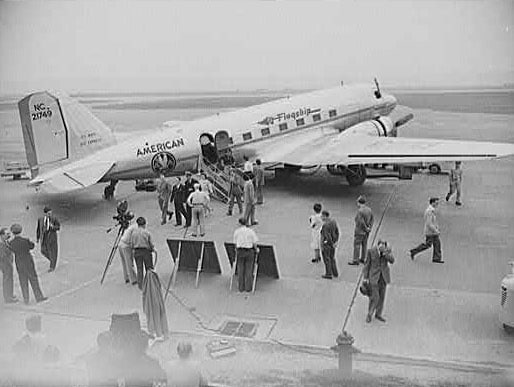
In 1934, American Airways became American Airlines, taking its place as a major player in the aviation industry. Two years later, American Airlines was the first to fly the Douglas DC-3 as part of a commercial service, helping it to become one of the leading domestic airlines by the end of the decade.
1940s-1950s: War and Post-War Expansion
In 1940, American Airlines put emphasis on customer happiness and opened its airport lounge for customers, becoming the first airline to do so.
As the company grew, the founder and first CEO of American, C.R. Smith wanted to try new things to improve the passengers’ flying experience. He created Sky Chefs to cook food for flights and opened restaurants in airports. Today Sky Chefs is operated by Lufthansa and still produces a large proportion of the onboard meals for the world’s airlines.
During World War II, airlines across the country worked with the military to help the war effort by transporting people and materials. 200 planes, especially the Douglas DC-3s, were drafted and put under the control of the Air Transport Command (ATC). This was formed in 1942 under leader General Henry H. Arnold. The ATC also benefited from the leadership experience of Smith, who served as wartime deputy commander of the ATC.
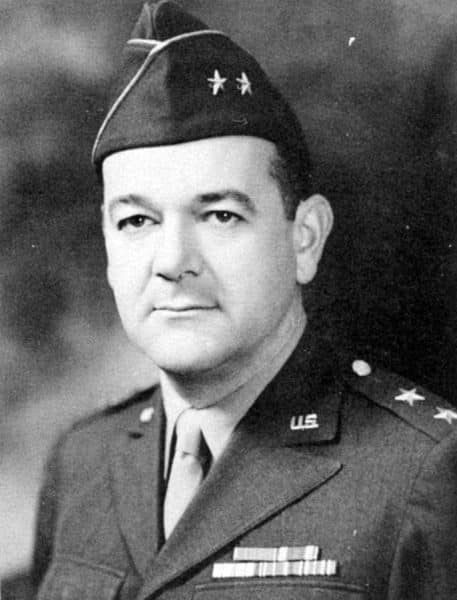
This decade witnessed some memorable firsts — in 1944, it flew its first cargo flight from LaGuardia Airport in New York. The next year, the first trans-Atlantic routes were established through the American Overseas Airlines (AOA). By 1947, American Airlines had established itself as a post-war leader in aviation, operating the only US fleet composed entirely of pressurized passenger aircraft, including the Douglas DC-6 and Convair 240.
In the 1950s, American Airlines continued to improve the passenger experience and operational efficiency. In 1952, the airline introduced the Reservisor, an early computerized system designed to track available seats, streamlining the booking process. A year later, American Airlines made history again by introducing nonstop transcontinental flights using the Douglas DC-7, allowing passengers to travel across the US without layovers.
To further improve service quality, the airline opened the American Airlines Stewardess College in 1957 at Dallas Fort Worth, creating the first specialized training facility for flight attendants. Additionally, 1959 saw American Airlines usher in the jet age with the introduction of the Boeing 707, offering faster coast-to-coast travel. This period of growth solidified American Airlines’ position as a major player in the US aviation market.
1960s-1970s: Further Expansion
During the 1960s, American Airlines continued its fleet expansion, incorporating new aircraft like the Boeing 727 in 1964 and later the Boeing 747 in 1970.
In 1964, American Airlines hired the first Black US commercial airline pilot, David Harris. The 1970s also saw the addition of Bonnie Tiburzi Caputo, the first female pilot to join a major US commercial airline.
Also during this decade, American Airlines extended its reach into the Caribbean market through a merger with Trans Caribbean Airways in 1970, establishing new routes in this popular vacation region. Additionally, the airline introduced the Super Saver fare in 1977, a discount pricing strategy to make air travel more affordable for regular customers.
The popularity of these fares led to their expansion across American’s entire route network, including Mexico and Canada. In 1979, the airline further solidified its growth strategy by relocating its headquarters from New York City to Dallas Fort Worth, Texas, a move that positioned it closer to key operational hubs.
1980s-1990s: Customer Loyalty Programs
American Airlines introduced AAdvantage, the company’s first frequent flyer program, in 1981. This program quickly became a model for customer loyalty and encouraged repeat customers by offering points for miles traveled. In 1982, the airline continued its expansion by adding a Chicago hub and acquiring its first Boeing 767.
The establishment of the American Eagle network in 1984 further strengthened the airline’s regional connections by putting smaller carriers under the American Airlines name.
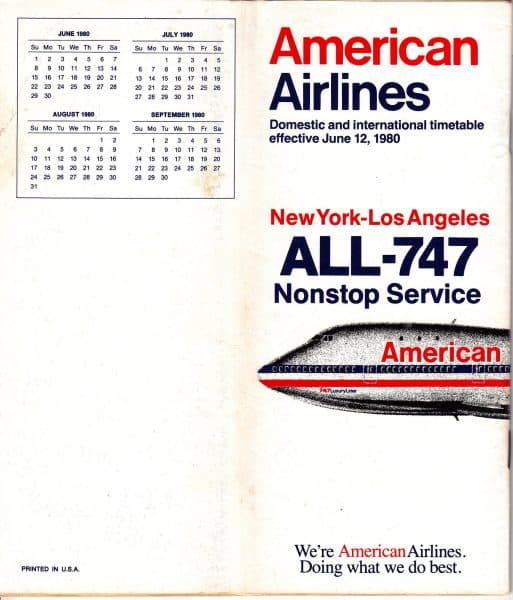
In the 1990s, American Airlines added routes to Europe to expand its international reach. In 1998, American Airlines became a founding member of the OneWorld Alliance, creating a global network with other major airlines. The Boeing 777 and 737-800 were introduced into the fleet in 1999, setting new standards for international travel comfort and efficiency.
2000s-2010s: Restructuring and Modernization
The 2000s were marked by both growth and significant challenges. The September 11 attacks in 2001 profoundly affected American Airlines, especially because two of its planes were hijacked in the attack, leading to industry-wide changes in security and operations. Despite these difficulties, American Airlines expanded its international footprint. It acquired assets from Trans World Airlines (TWA) giving it a greater market share.
It introduced nonstop Boeing 777 service from New York JFK to Tokyo in 2002 and later added routes to Delhi, India in 2005. The airline also embraced technological advancements, introducing mobile boarding passes in 2008 and launching the mobile version of AA.com.
The airline faced financial challenges, filing for Chapter 11 bankruptcy protection in 2011 due to high fuel costs and long-term lower demand for travel, with pilot contract negotiations tipping the airline’s finances over the edge. What followed was a restructuring period that enabled American Airlines to cut costs and prepare for a significant merger with US Airways, which would reshape its future.
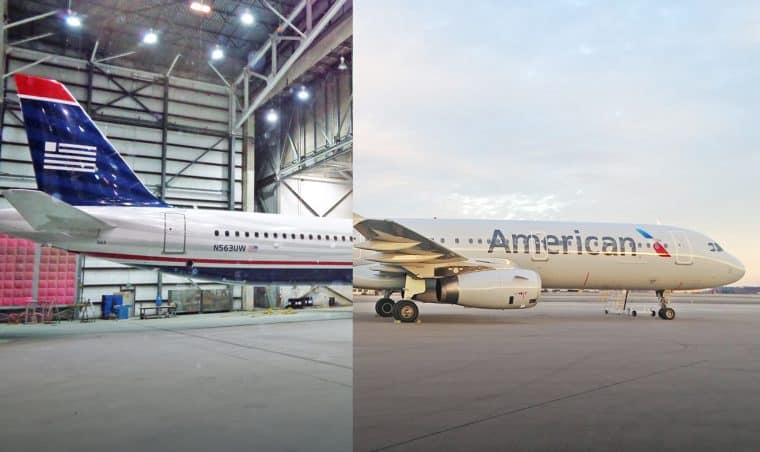
The 2010s were defined by the merger with US Airways in 2013, which created the American Airlines Group Inc., the world’s largest airline by several metrics. Although the two airlines initially operated separately, by 2015 they had fully integrated their operations so that all customers received service under the American Airlines brand.
In this period, the airline also invested in modernizing its fleet, introducing the Boeing 777-300ER and Airbus A321neo. American Airlines expanded its offerings for top customers in 2016 with the launch of International Premium Economy, becoming the first US carrier to provide this class of service on long-haul flights.
2020-Present: Surviving the Pandemic
The 2020s have brought unprecedented challenges with the COVID-19 pandemic, which caused a steep decline in travel demand, with a global decrease in international travel of 72% according to the UN. American Airlines was forced to drastically reduce its domestic and international flights, leading to net losses of $2.2 billion by the fourth quarter of 2020, excluding net special items.
Despite these setbacks, the airline adapted quickly, focusing on sales of seats in premium cabins. It also expanded its Northeast Alliance with JetBlue to provide members with more benefits. It redesigned the AAdvantage loyalty program, to make the point system easier to understand. Meanwhile, new routes to Latin America and the Caribbean were added as travel demand began to recover in 2021, with net losses in the fourth quarter of $931 million.
American Airlines Controversies
In 2017, the NAACP issued an advisory for Black Americans to be cautious when traveling on American Airlines after a slew of discriminatory incidents came to light. Four incidents led to the advisory, including a Black man being forced to give up his seat after responding to derogatory comments and a Black woman being bumped to coach while her white companion was left in First.
American responded swiftly and the advisory was lifted in 2018 after the company instituted a diversity, equity, and inclusion advisory council. The council was disbanded in 2023 and the NAACP is calling for its reinstatement after three Black men, unknown to each other at the time, were asked to leave a flight in Pheonix when apparently a crew member raised issues about body odor.
History of American Airlines Strikes
On November 11, 1993, over 21,000 American Airlines flight attendants went on an 11-day strike in the largest action in American aviation history at the time. It took the intervention of President Clinton to bring both sides to the bargaining table and agree to binding arbitration.
Fifteen years later, strikes were once again called at Dallas Fort Worth for flight attendants across a range of airlines, including American, bringing attention to poor pay and conditions.
Strike action once again loomed in the middle of 2024, when flight attendants and airlines couldn’t reach agreement on pay and conditions. However, by September negotiations led to all members of the Association of Professional Flight Attendants (APFA) securing a deal including a 20% pay increase over five years.
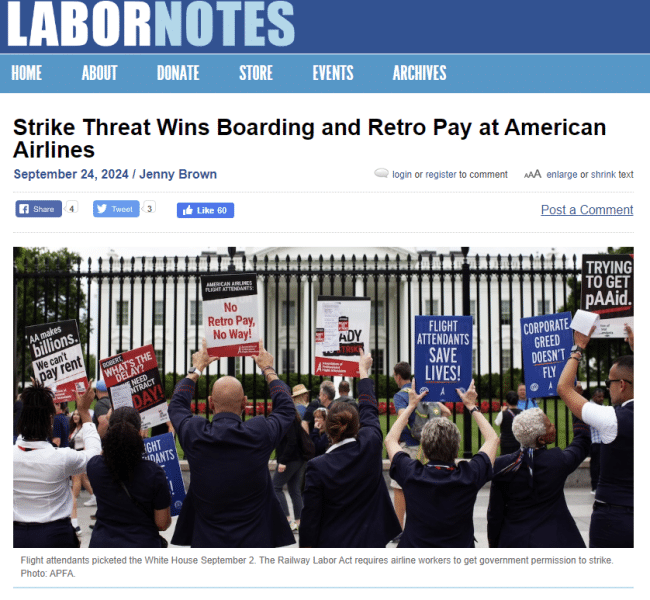
What Can We Learn from American Airlines?
American Airlines is the largest airline in the world thanks to its ability to innovate and reinvent during difficult times since its foundation in 1930 as American Airways.
American Airlines has consistently shown a commitment to innovation. It demonstrated its commitment to progress by hiring the first Black and female commercial airline pilots. It also showed its appreciation for its customers by launching a loyalty program and introducing airport lounges.
Americans’ growth strategy has involved a combination of organic expansion and mergers. Expanding routes overseas and across the continent allowed it to reach new markets and broaden its customer base. Additionally, strategic mergers, like the one that formed American Airlines Group Inc. in 2013, helped it grow and strengthen its position in the market.
The company plans to increase domestic and international routes as well as investing ground operations with more technicians being recruited across Charlotte, Pittsburgh, and Tulsa. With the travel industry seeing strong post-pandemic growth, American Airlines should have a strong future.

